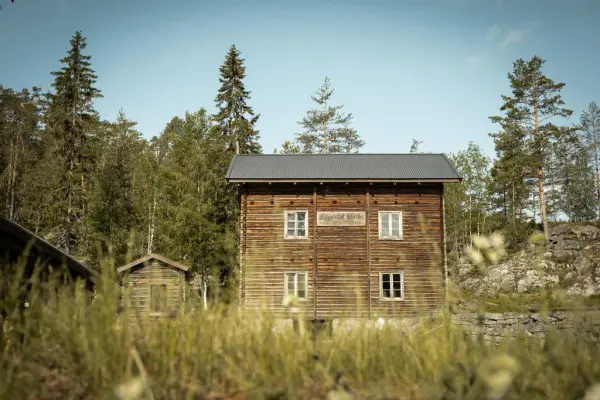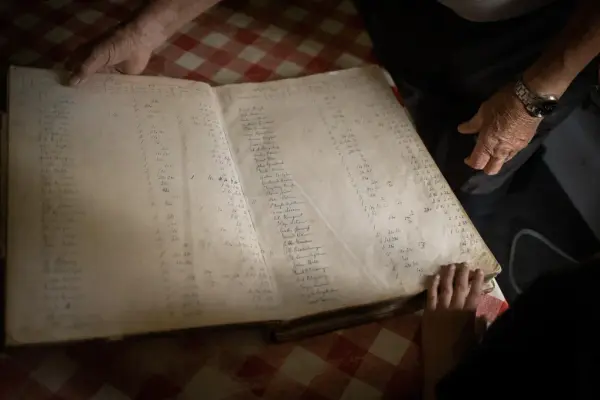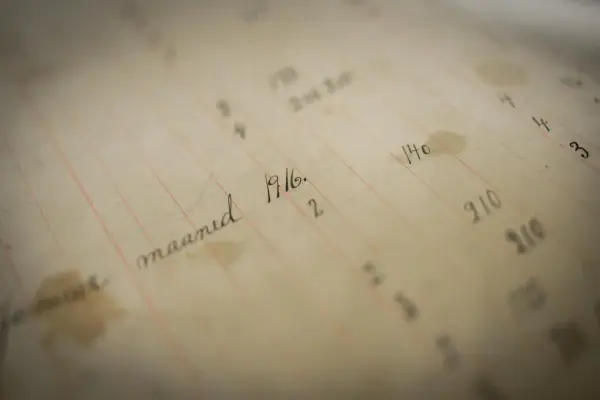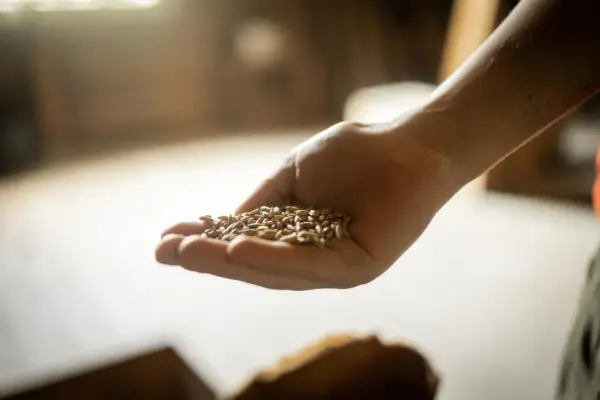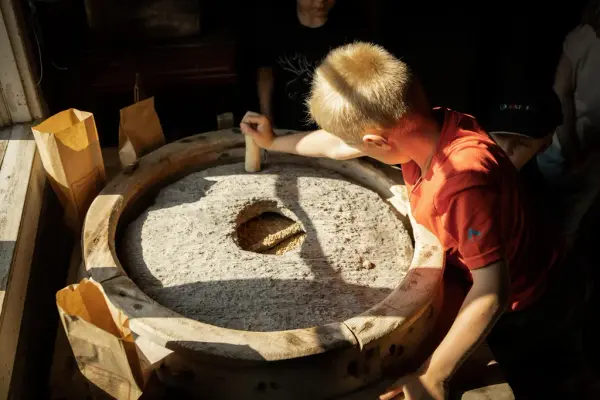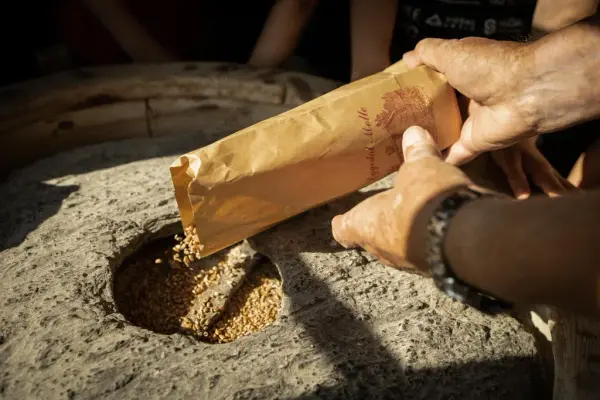-
Marius Seierstad, NYG reklame
Mills has played an important role in the Norwegian agricultural community, especially up to the middle of the 20th century. Mills has existed since the Middle Ages. There was a time when people depended on the grinding of grain to produce flour. The mills were central to the local communities and offered a necessary service for the farmers.
The earliest mills were water mills, which utilized energy from rivers and streams. Sigdal, with its many waterways, was ideal for such mills. The water mills were often built with a simple construction, where the power of the water drove a millstone that ground the grain.
In a book of estates in Sigdal and Modum from 1657, it is mentioned that there were 30 stream grinder and two waterfall kennels in Sigdal and Eggedal. If you had a stream with such a drop that a you could run a small mill during the flood, then you had a stream mill. At the registration in 1723, we find that there were 21 mills in Eggedal - these were preferably stream mills or waterfall mills
Throughout the 18th century, there were so-called stream grinders everywhere, both in Sigdal and Eggedal. Purchased flour was not easy to obtain at the time, and most people did not have money to buy flour. You had to fend for yourself, and probably had to use the flour from the stream mill, even if the flour was rather coarse.
-
Håkon Frøvold demonstrates the mill Marius Seierstad, NYG reklame
During the 17th and 18th centuries, mill technology became more advanced. More mills came to the villages, and some of them were powered by steam and later electricity. This helped the mills to serve more users and produce larger quantities of flour.
In the 1850s and 1860s, the old stream mills began to fall into disrepair, and there was a need for mills that could receive grain for grinding from several sources. Several larger mills were then built. In 1860, the "Sandsbraaten mill" at Horga was built. In 1883, a smaller mill at Albjerkfossen was closed down, and a new larger mill was built for the district. From the spring of 1878, Sigdal share mill came into operation. In 1876 a joint-stock company was formed for the construction of a mill powered by the rapids at Anfindrud. The construction of the mill cost between NOK 30-40,000, the joint-stock company incurred a significant debt and the mill was for a long time a very bad business for the shareholders.
In Eggedal, mills were in a bad situation for a long time after the old stream mills began to fall into disrepair and little by little went out of use. You had to travel all the way to Sigdal to get ground grain. It was a long and hazarduous journey to the nearest mill. Following the initiative of K. K. Rugland, a joint-stock company was formed in 1910 for the construction of a mill in Eggedal. The company had 83 shareholders and a share capital of NOK. NOK 12,150 The stock mill was built on Omnanjordet with power from Kjerujeldfossen, and the first sack of grain was ground on 29 March 1912. It was completely set up in time and was powered by a turbine. The mill's construction was a very demanding undertaking, it had a lot to do from the beginning, and also made a profit from the beginning.
The mills functioned not only as places of production, but also as social meeting places. Farmers came to grind grain and exchange news, making the mills important to the community.
-
The old protocols from when the mill was in use can be seen at Eggedal mill. NYG reklame
The post-war period led to changes in agriculture and food culture. Industrialization and the rise of large-scale agriculture led to the closure of many smaller mills. Some were modernized and operated with larger quantities, but many of the traditional mills disappeared.
Eggedal mill was in annual operation until 19 September 1965, when the general meeting decided to cease operations. The board of the joint-stock mill would like the mill to be preserved, and eventually teacher Sigurd Tveiten bought the mill and the 20-acre mill property, and he worked to make it a museum.
Today, several historic mills are protected as cultural monuments, and there is an interest in preserving this part of Norway's cultural history. Mills that remain today are not just buildings; they are also testimony to a time when agriculture shaped society and the economy, and they tell the story of how people have exploited natural resources to support their daily lives. Eggedal mill's history is an important part of regional history, which reflects the development of agriculture and industry in Norway.
